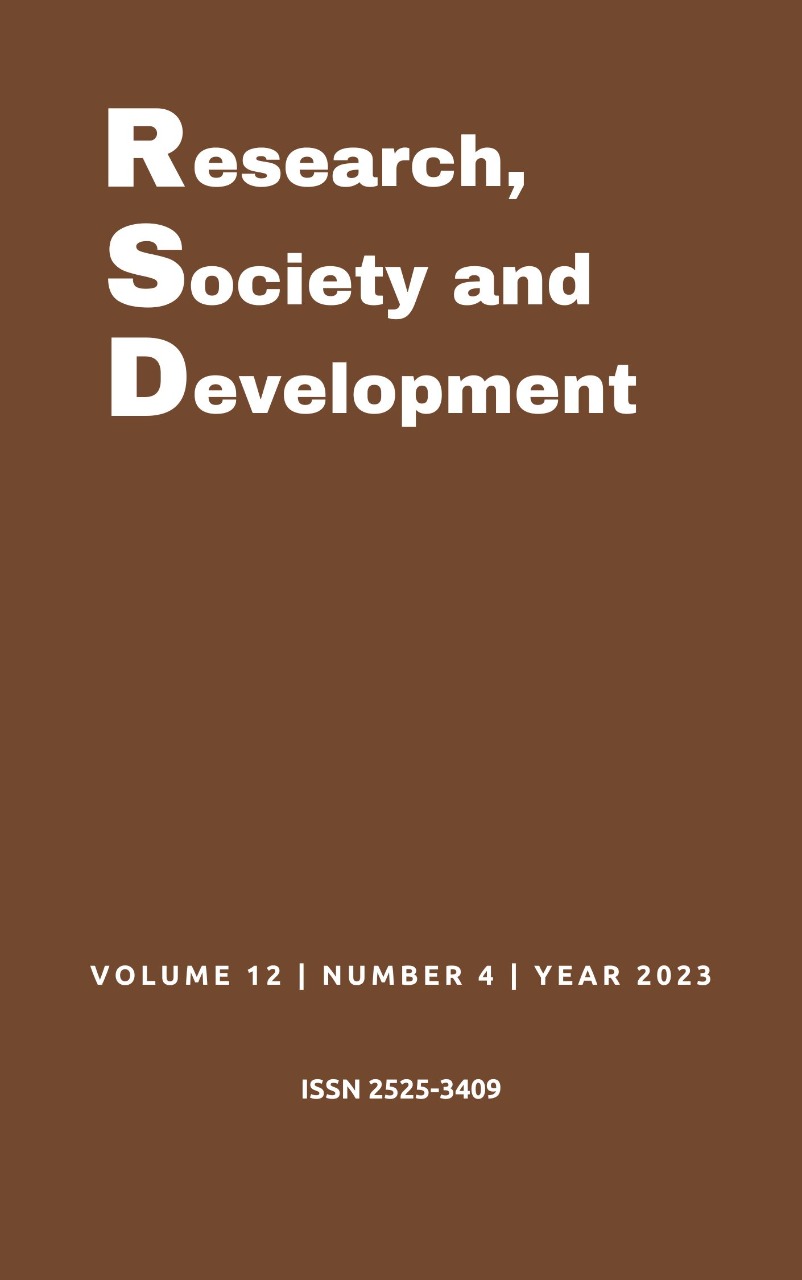The impact of dysmenorrhea on the quality of life of students at a private university: a cross-sectional analysis
DOI:
https://doi.org/10.33448/rsd-v12i4.40981Keywords:
Absenteeism, Dysmenorrhea, Students, Menstruation, Womens health.Abstract
Objective: To verify the prevalence and impact of dysmenorrhea in the lives of students at a private university, in addition to comparing the intensity of the referred symptoms with the decrease in quality of life; elucidate the impact of menstrual cramps on academic absenteeism. Methods: This is a qualitative and quantitative cross-sectional study with 264 medical students enrolled in a Private University of Teresina, Piauí, to carry out the research, a self-applied questionnaire was adopted, formulated by the authors, later the data were analyzed with statistics descriptive. Results: 264 academics participated in this study with the average age of the academics who participated in the study was 23.8 years (±5.0), with a maximum age of 42 years and a minimum of 18 years. In the present study, 44.4% of the participants answered that the signs and symptoms of dysmenorrhea interfere with their usual activities in the first days. Regarding the occurrence of other symptoms, 87.5% confirmed the existence of other complaints in addition to menstrual cramps. The most prevalent symptoms were headache, nausea, diarrhea, leg pain. All participants had associated symptoms, the most common being nervous irritation (54%), breast pain (50.8%), low back pain (50.8%), headache (27.4%), nausea (26.6%), lower limb edema (13.7%), vomiting (11.3%), and diarrhea (10.5%). Conclusion: A high prevalence of dysmenorrhea was observed in this study, calling attention to a significant number of women who reported moderate to severe pain, contributing to high school absenteeism and social harm, which can negatively affect academics.
References
Bernardi, M., Lazzeri, L., Perelli, F., Reis, F. M., & Petraglia, F. (2017). Dysmenorrhea and related disorders. F1000Research, 6, 1645.
Chen, H. M., & Chen, C. H. (2005). Related factors and consequences of menstrual distress in adolescent girls with dysmenorrhea. The Kaohsiung journal of medical sciences, 21(3), 121-127.
Cavalcante, S. Y. I. E. d. S., M. C., Carvalho, M. B. Kamilla, K. S. C., Rocha, J. L., & Formiga, C. K. M. R. (2016). Prevalência da síndrome pré-menstrual e dismenorreia em mulheres em idade reprodutiva. Revista Movimenta, 2(9) 178-189.
Dall`acqua, R., & Bendlin, T. (2015). Dismenorreia. Femina, 43(6), 273-276.
Durand, H., Monahan, K., & McGuire, B. E. (2021). Prevalence and impact of dysmenorrhea among university students in Ireland. Pain Medicine, 22(12), 2835-2845.
Ferreira, E. J., Azanki, N. C., Batista, A. C., & Albernaz, C. (2010). Atuação da fisioterapia na dismenorreia primária. Vita et Sanitas, 4(1), 57-72.
Frare, J. C., Tomadon, A., & Silva, J. R. d. (2013). Prevalência da dismenorreia e seu efeito na qualidade de vida entre mulheres jovens. Revista Brasileira de Ciências da Saúde, 0(39), 15-20.
Ibrahim, N. K., AlGhamdi, M. S., Al-Shaibani, A. N., AlAmri, F. A., Alharbi, H. A., Al-Jadani, A. K., & Alfaidi, R. A. (2015). Dysmenorrhea among female medical students in King Abdulaziz University: Prevalence, Predictors and outcome. Pakistan journal of medical sciences, 31(6), 1312–1317.
Oliveira Nunes, J. M., do Amaral Rodrigues, J., de Freitas Moura, M. S., Batista, S. R. C., Coutinho, S. K. S. F., Hazime, F. A., & dos Reis Barbosa, A. L. (2013). Prevalência de dismenorreia em universitárias e sua relação com absenteísmo escolar, exercício físico e uso de medicamentos. Revista Brasileira em Promoção da Saúde, 26(3), 381-386.
Omidvar, S., Bakouei, F., Amiri, F. N., & Begum, K. (2016). Primary dysmenorrhea and menstrual symptoms in Indian female students: prevalence, impact and management. Global journal of health science, 8(8), 135.
Pereira, A. S., Shitsuka, D. M., Parreira, F. J., & Shitsuka, R. (2018). Metodologia da Pesquisa Científica. Santa Maria, UFSM.
Rodrigues, A. C., Gala, S., Neves, Â., Pinto, C., Meirelles, C., Frutuoso, C., & Vítor, M. E. (2011). Dismenorreia em adolescentes e jovens adultas. Acta medica portuguesa, 24.
Rodrigues, J. C., Avila, M. A., & Driusso, P. (2021). Transcutaneous electrical nerve stimulation for women with primary dysmenorrhea: Study protocol for a randomized controlled clinical trial with economic evaluation. PloS one, 16(5), e0250111.
Tadese, M., Kassa, A., Muluneh, A. A., & Altaye, G. (2021). Prevalence of dysmenorrhoea, associated risk factors and its relationship with academic performance among graduating female university students in Ethiopia: a cross-sectional study. BMJ open, 11(3), e043814.
Terzi, R., Terzi, H., & Kale, A. (2015). Avaliação da relação entre síndrome pré-menstrual e dismenorreia primária em mulheres com fibromialgia. Revista brasileira de reumatologia, 55, 334-339.
Zurawiecka, M., & Wronka, I. (2018). Association of primary dysmenorrhea with anthropometrical and socio‐economic factors in Polish university students. Journal of Obstetrics and Gynaecology Research, 44(7), 1259-1267.
Downloads
Published
Issue
Section
License
Copyright (c) 2023 Cícero Ferreira Lima Júnior; Bianca de Araújo Veloso; Sarah Damasceno Holanda; Isadora Cronemberg Rufino Freitas; Fernanda Silva Lopes Macedo

This work is licensed under a Creative Commons Attribution 4.0 International License.
Authors who publish with this journal agree to the following terms:
1) Authors retain copyright and grant the journal right of first publication with the work simultaneously licensed under a Creative Commons Attribution License that allows others to share the work with an acknowledgement of the work's authorship and initial publication in this journal.
2) Authors are able to enter into separate, additional contractual arrangements for the non-exclusive distribution of the journal's published version of the work (e.g., post it to an institutional repository or publish it in a book), with an acknowledgement of its initial publication in this journal.
3) Authors are permitted and encouraged to post their work online (e.g., in institutional repositories or on their website) prior to and during the submission process, as it can lead to productive exchanges, as well as earlier and greater citation of published work.


